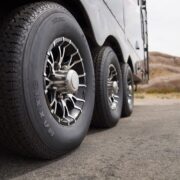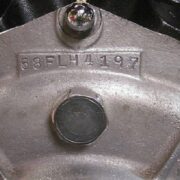There are a lot of things to consider when choosing the right headset bearing for your bicycle. One thing to think about is whether you want a steel or ceramic bearing. Steel bearings are more durable and tend to be cheaper, though they can make some noise while cycling. Ceramic bearings require less maintenance but cost more money up front and may not last as long as steel bearings due to their fragility. In this blog post, we will discuss all of the differences between these two types of headsets so that you can choose one that best suits your needs.
Table of Contents
Durability
Steel bearings are tough and more durable than ceramic bearings. However, they make more noise than ceramic bearings because they cannot maintain a low coefficient of friction like ceramics do. This means that your steel bearing will need some maintenance every now and then for it to work well and last longer. Ceramic bearings can wear down over time due to their fragility if you do not maintain them regularly.
Ceramics are hard and conduct heat well, which allows for a low friction coefficient that reduces wear on the bearings over time. The ceramic balls in a set of ceramics bearings allow you to rotate your wheel smoothly without any noise or resistance from the bearing itself. However, this also means that if ceramics contact any dirt or debris, they can become scratched and worn out.
Cost
Steel bearings are cheaper than ceramic bearings because there is less technology behind them. The steel bearing design has been around for a long time, which means that it is easier to mass-produce and therefore costs less money for the manufacturer and you.
Ceramic bearings do not need to be replaced as often because they are more durable and less likely to show signs of wear. Ceramics also have a smooth rotation that allows for silent cycling, which steel balls cannot provide.
Cleaning
If your steel bearing becomes dirty, you can clean it by removing the balls and placing them in a container with acetone or isopropyl alcohol for about an hour. Afterward, spray some WD-40 on the bearings to remove any excess grime that may have accumulated during cleaning. Then dry the bearing with a paper towel and reassemble it onto your bike.
Ceramic bearings can be cleaned by removing the balls from the outer ring, cleaning them in an isopropyl alcohol or acetone container, and then drying for 24 hours. After they have dried, you just need to put all of the ceramic balls back into the outer ring, dry it with a paper towel and reassemble your headset. Note, ceramic balls can contact dirt or debris from the road if your wheels are not cleaned often.
Summary
Steel bearings are less expensive than ceramic bearings because they are made to be more durable. Ceramic bearings will not need to be replaced as often but can break if you do not clean them regularly or contact dirt or debris on the road. Steel bearings can make some noise while cycling, but ceramic bearings are usually silent.















Comments